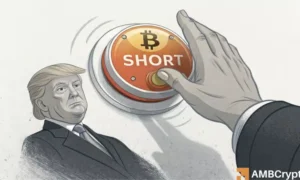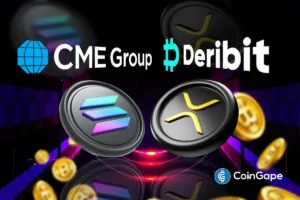The Rise of Stablecoins: A New Era of Digital Payments
Stablecoins are experiencing unprecedented market growth in Western economies, notably the United States, the United Kingdom, and Europe. Unlike their rapid adoption in many developing nations, Western nations have faced hurdles such as unclear regulations and an entrenched digital payments infrastructure. However, with the passage of the GENIUS Act in July 2025, a turning point has emerged. The legislation lays the groundwork for a more structured stablecoin ecosystem, ensuring regulatory clarity that could lead to robust market adoption.
GENIUS Act: A Game-Changer for Stablecoin Regulation
The GENIUS Act is poised to be a landmark in the regulation of stablecoins. As the first federal licensing regime specifically for dollar-pegged tokens, it mandates full-reserve backing through cash and short-dated Treasuries. This framework promotes transparency with monthly reserve disclosures while exempting licensed payment stablecoins from classified as securities under federal law. Oversight will fall under the regulatory purview of bank regulators, ensuring a level of maturity that could foster trust among users.
However, this new law also introduces constraints, including a prohibition on issuers paying interest to holders. Despite this limitation, the market is innovating with a "rewards" construction, leading to some scrutiny from banking trade groups. The Act also ensures that holders of stablecoins enjoy a super-priority status in issuer bankruptcies, an important consumer protection measure that could impact how companies navigate financial distress.
Market Dynamics and Growth Potential
Current estimates for real-world stablecoin transactions hover around $20 to $30 billion daily, with projections suggesting a potential increase to $250 billion within three years. This growth is expected primarily through the continued acceptance of stablecoins among merchants and businesses, supported by low transaction fees. Visa and Mastercard, already entrenched in the payment landscape, have begun to integrate stablecoin settlements within their frameworks, signaling a broader acceptance of these digital assets.
The adoption curve suggests a pivotal 12–36 month period where stablecoins could claim a significant share of the nearly $11.9 trillion U.S. card spending market. If just 5% of this spending transitions to stablecoin transactions, merchant savings could exceed $8.8 billion annually. Such shifts not only offer cost benefits but could also enhance efficiency, particularly in cross-border transactions, thereby driving further adoption.
Revenue Mechanics Behind Stablecoins
Stablecoin issuers may face unique economic scenarios due to the GENIUS Act’s interest ban. However, the potential revenue from a two-trillion-dollar stablecoin float by 2028 could lead to substantial operational funding. With three-month Treasury bill yields nearing 4%, issuers could generate around $80 billion in gross yield on reserves.
Though issuers cannot directly pay interest, they can use yield to enhance compliance, operational capabilities, and partner incentives. "Rewards" programs at exchanges are under experimentation, indirectly redistributing some of these benefits among end-users. Market dynamics also indicate that a significant portion of these yields could be captured by issuers, ranging from $20 billion to $40 billion if the float reaches the projected levels.
Projected Growth and Networks
With annualized settlement volume potentially exceeding $90 trillion, stablecoins stand to offer a promising revenue stream for networks operating on Layer 1 or Layer 2 solutions. Fee structures ranging from 1 to 3 basis points could yield between $9 billion to $27 billion in yearly revenue, additional to existing low transaction costs. The burgeoning landscape emphasizes not just transactional fees but also value-driven services like fraud protection and compliance measures, which could see even wider market adoption.
Key players like USDC and EURC appear well-positioned to exploit existing integrations within established networks, making them formidable options in the B2B settlement space. On the other hand, bank-issued tokens may appeal to treasury teams seeking immediate cash accounting alongside bank guarantees. However, challenges remain in cross-border operations and developer tools.
Regulatory and Competitive Landscape
The macroeconomic backdrop indicates a growing demand for stablecoin reserves, with the GENIUS Act ensuring that most assets are locked in highly liquid forms. As stablecoin market caps surpass $285 billion and daily utility expands, the future of stablecoins looks promising. Nonetheless, regulatory risks are apparent. The rewards workaround has spurred pushback from banking groups and could be subject to curtailing legislation. Additionally, super-priority protections during bankruptcies could complicate issuer resolutions, requiring a delicate balance between consumer protections and operational feasibility.
Given these factors, margins for stablecoin operations must be viewed as dynamic ranges influenced by market competition. Smaller issuers could find it challenging to navigate these complexities without robust infrastructures or enterprise integrations.
Watch For: Future Developments in Stablecoin Adoption
The next critical phase involves observing how Visa and Mastercard roll out stablecoin settlement mechanisms beyond pilot projects and the role Tempo will play in facilitating enterprise payments. Furthermore, the U.S. Treasury’s implementing guidelines under the GENIUS Act will be pivotal in dictating the ecosystem’s direction, especially concerning licensing and reserve standards.
If projections hold, stablecoins will increasingly compete with traditional payment methods such as cards and bank wires. With a potential daily settlement volume of $250 billion by 2028, the landscape for digital payments is set for a transformation that could redefine how transactions are conducted in both domestic and international contexts.

















